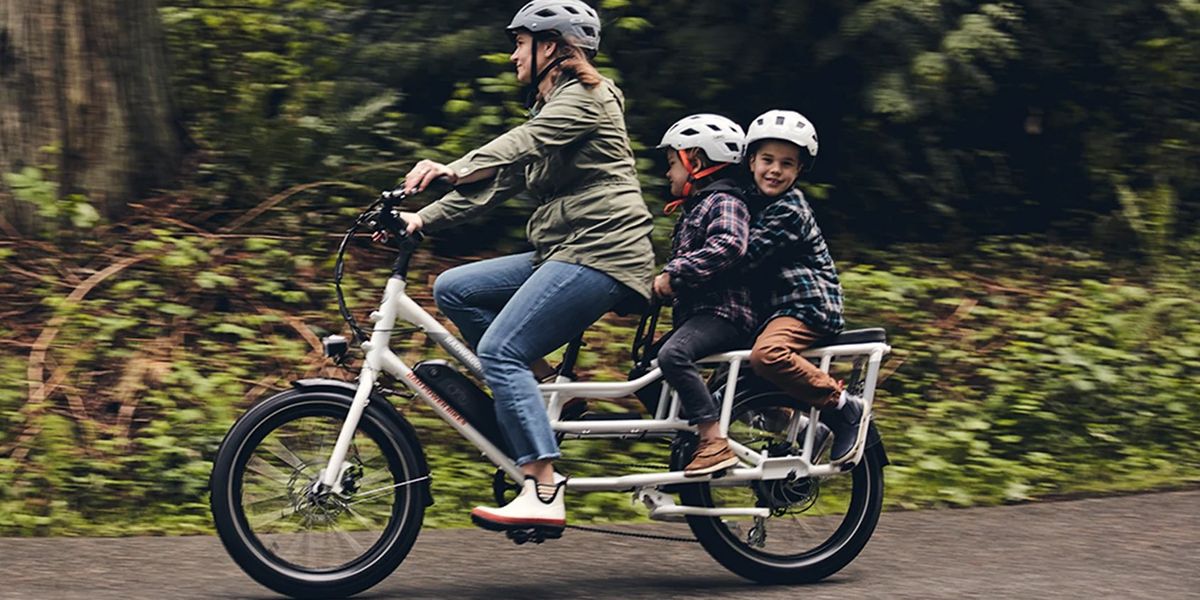Since Tesla seized the world’s imagination, EVs have been cast as lead rebels in the transportation revolution. Then e-bikes whirred into the war against climate change. In 2024, a maturing industry is broadening its design ambitions and engineering sophistication. Manufacturers are expanding into traditional riding categories and creating new ones: Fat-tire bikes and lightweight commuters. Folding bikes for space-challenged riders. Serious cargo haulers and people movers that can replace car trips. All with life-cycle carbon emissions at a fraction of the most efficient EV, scooter or motorcycle.
“As Americans get used to the idea of bikes that can carry cargo or passengers, that expands the opportunity to reduce car trips.” —John MacArthur, Portland State University
“It took years for e-bikes to ramp up and enter the public consciousness,” said Tara Seplavy, an editor, racer and product tester at Bicycling magazine. “But we’re now experiencing the quickest tech development I’ve seen in the bike industry in 30 years.”
John MacArthur, sustainable transportation program manager at Portland State University, has studied e-bikes for more than a decade. As genres expand beyond pure recreation, he said, companies and riders alike are seeing e-bikes as a legitimate stand-in for polluting cars.
“The research shows that e-bikes get more people riding, and more people riding more often,” MacArthur said. “As Americans get used to the idea of bikes that can carry cargo or passengers, that expands the opportunity to reduce car trips.”
Prices drop, remit expands
With post-Covid supply chains untangled, prices are plummeting, introducing new riders to the advantages of electric-assisted chain or belt drives—almost unfair to anyone who’s puffed their way up hills on a conventional bike. Tech features that were once prohibitively expensive, including hydraulic disc brakes, are falling within reach of the masses. Hub-motor designs, which power a rear wheel independently of the pedals and crankset, can deliver a thrilling burst of torque, but were often seen as unreliable or clumsy to ride. Tech refinements have made hub motors a viable alternative to sophisticated “mid-drive” designs with motors integrated into the crank assembly itself.
“We’re seeing a big shift, people turning an e-bike into their preferred transportation method.” —Sarah Thorne, Colorado Energy Office
“E-bikes were seen as a nice plaything for people with money,” said Seplavy, who spent two decades in bicycle product and brand development. “But great bikes have now dipped below $2,500, and as low as $1,500. They’re taking root with Americans, and familiarity is huge: More people try them, they enjoy the ride, and the price comes down.”
Grand View Research projects the U.S. e-bike market will grow by nearly 16 percent annually through 2030, to more than $6.5 billion a year. And experts cite cargo bikes as 2024’s hottest trend. Heavy-duty…
Read full article: E-Bikes Are Growing Up, Finding Jobs, Still Having Fun

The post “E-Bikes Are Growing Up, Finding Jobs, Still Having Fun” by Lawrence Ulrich was published on 04/14/2024 by spectrum.ieee.org




































